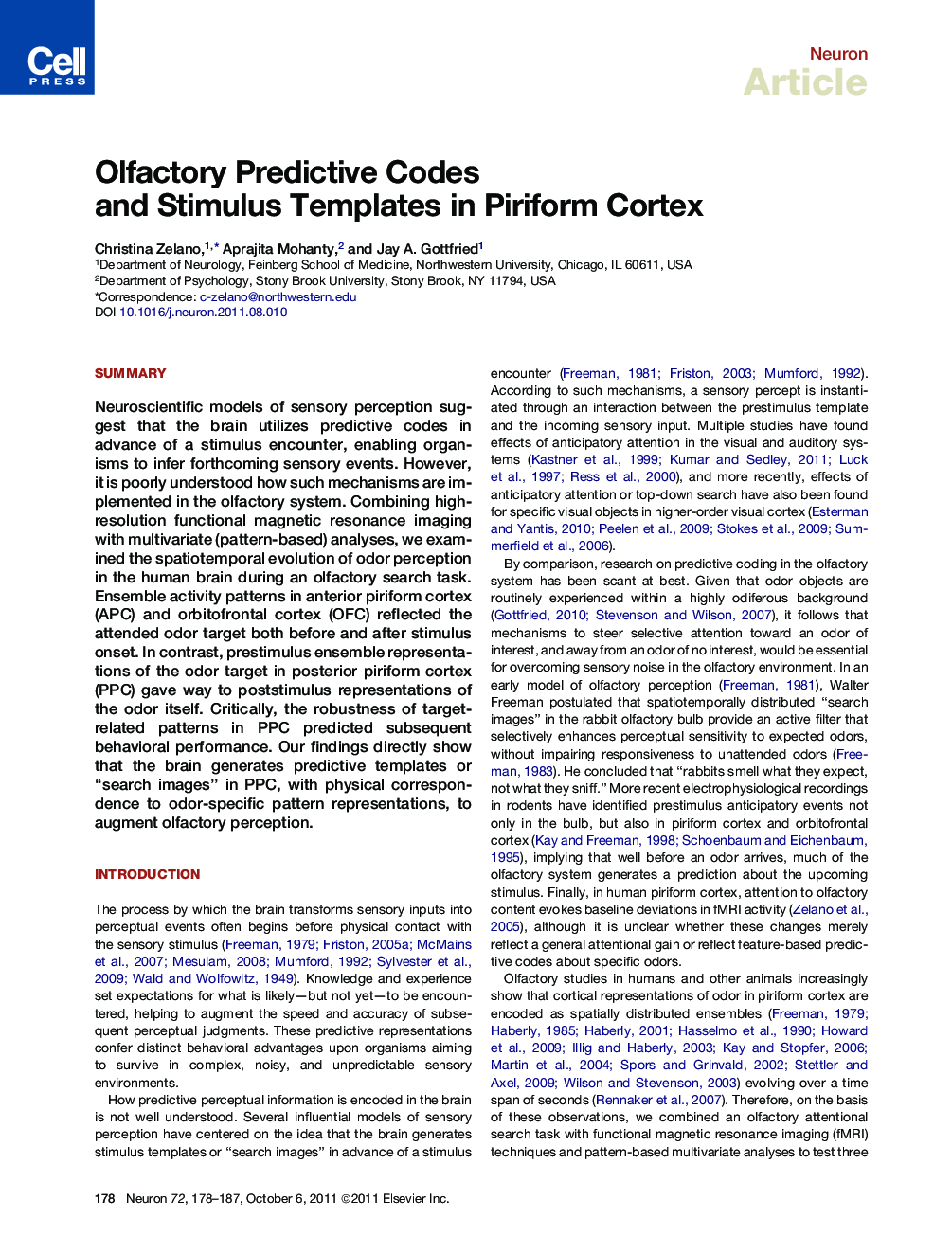| Article ID | Journal | Published Year | Pages | File Type |
|---|---|---|---|---|
| 4321633 | Neuron | 2011 | 10 Pages |
SummaryNeuroscientific models of sensory perception suggest that the brain utilizes predictive codes in advance of a stimulus encounter, enabling organisms to infer forthcoming sensory events. However, it is poorly understood how such mechanisms are implemented in the olfactory system. Combining high-resolution functional magnetic resonance imaging with multivariate (pattern-based) analyses, we examined the spatiotemporal evolution of odor perception in the human brain during an olfactory search task. Ensemble activity patterns in anterior piriform cortex (APC) and orbitofrontal cortex (OFC) reflected the attended odor target both before and after stimulus onset. In contrast, prestimulus ensemble representations of the odor target in posterior piriform cortex (PPC) gave way to poststimulus representations of the odor itself. Critically, the robustness of target-related patterns in PPC predicted subsequent behavioral performance. Our findings directly show that the brain generates predictive templates or “search images” in PPC, with physical correspondence to odor-specific pattern representations, to augment olfactory perception.Video Abstract To view the video inline, enable JavaScript on your browser. However, you can download and view the video by clicking on the icon belowHelp with MP4 filesOptionsDownload video (14955 K)
► Odor ensembles in APC and OFC reflect what is sought, rather than what is delivered ► PPC patterns evolve from predictive templates to odor codes after stimulus onset ► The strength of template formation in PPC predicts olfactory perceptual performance ► Neural access to both target and stimulus codes may help resolve odor ambiguity
